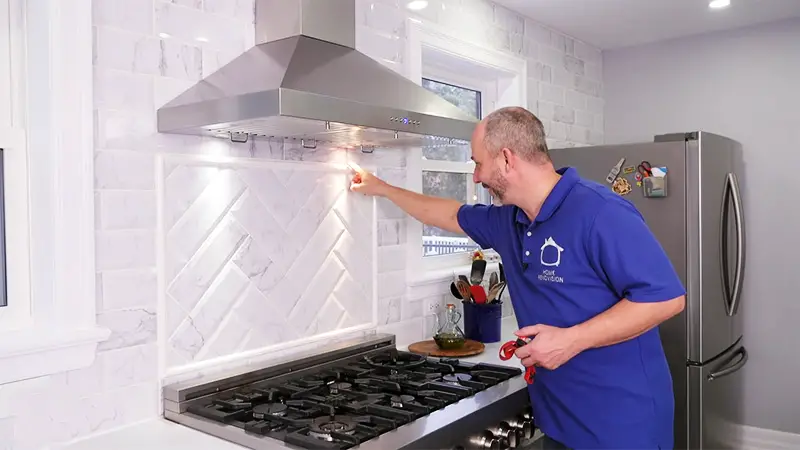Cooking is a beloved pastime for many, but the heat generated in the process can make your kitchen feel like a sauna.
That’s where kitchen hood vents come in – they’re designed to extract the hot air and cooking fumes from your kitchen, making cooking more comfortable and enjoyable.
However, have you ever noticed that your kitchen hood vent seems to pull in hot air from outside, making it even more challenging to keep your kitchen cool?
This is a frustrating problem that many homeowners face, and it can be caused by various factors.
Why Is Hot Air Coming Through The Range Hood?
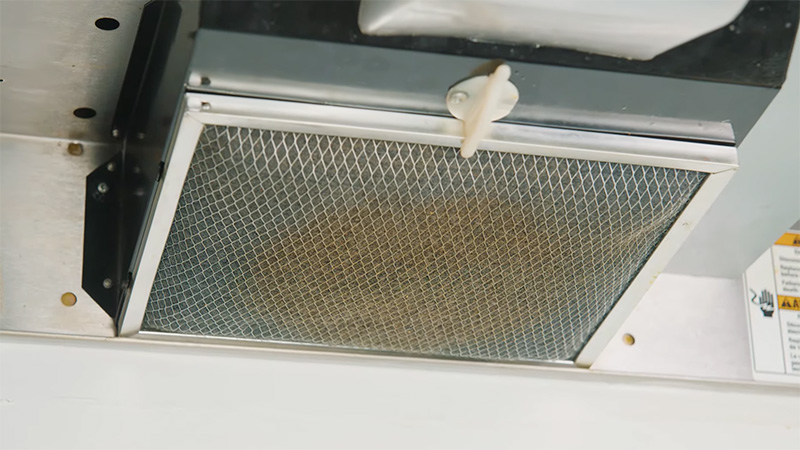
Range hoods can be concerning when hot air is coming from them. This is what you need to know about why your home may be experiencing these problems.
If the outside air enters through the range hood, that’s the first thing to check. An exhaust damper or flapper on top of the unit may not have been properly closed after use, or a problem with the ducts that exhaust the unit’s air could occur.
It is also possible for buildup inside filters or vents to reduce airflow and cause warm air to enter your kitchen from behind the range.
What To Do If Your Range Vent Hood Pulls In Hot Outside Air?
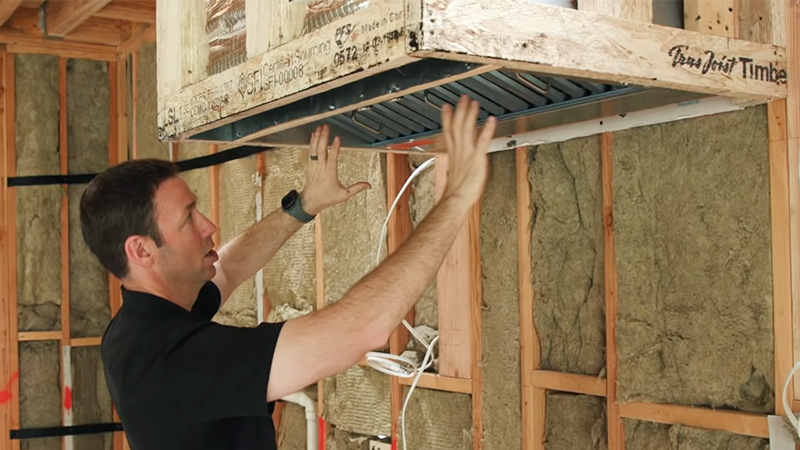
Range hoods are correctly installed with two metal dampers to keep outside air out. The first is located at the top of the hood, where it connects to the duct; the second is located at the cap on the wall or roof, where the air is exhausted.
Although these thin metal flaps don’t form airtight seals because they open during low fan speeds, they should keep cold and hot air from entering your hood.
Inspect the dampers and ensure they are working properly as a first step. You should begin with the outside cap. When the fan is off, there should be a spring that holds the damper shut on the hood’s duct.
If the damper itself is bent or blocked from closing completely, look for that as well. The same can be done with a roof cap, although it may not require a spring since it is more horizontal.
Replacing a cap if it doesn’t close properly is also a good idea. The damper on the hood should be visible now. It will require removing the duct section it’s attached to.
Butterfly dampers are often found with two metal flaps pivoting on horizontal bars. While it’s unlikely that grease will build up on the flaps, bar, or its housing — the grease screens on the hood should catch most of it — give them a spritz of degreaser and gently wipe them down.
To check whether the damper opens and closes completely, turn the fan on and off several times. Adding a small piece of foam to the flaps can give them enough weight to ensure a perfect fit even without the fan.
Ensuring that no duct screws interfere with the flaps’ movement is also important. There is a possibility that installers may place a few plants in the wrong locations by accident.
In this case, install a new damper before reconnecting the duct to the hood if the former is damaged.
Should A Vent Hood Duct Be Covered For Avoiding Getting The Range Hood Overheating?
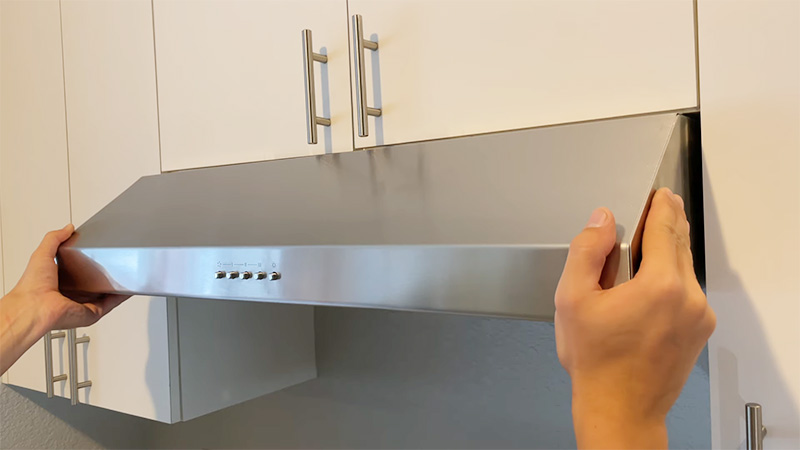
It is essential to have a properly ventilated kitchen to make cooking a safe and comfortable experience. You can experience overheating when your range hood is not correctly vented outside.
Many people ask whether they should cover their vent hood duct to prevent overheating. As the simple answer implies, providing a cover for the vent hood duct will not prevent it from overheating.
Although it seems like a logical solution, as a result, if you cover the duct, you will prevent much-needed airflow, which may cause the range hood to overheat even faster than it already did.
To avoid this problem, ensure your range hood is installed correctly and sufficient ventilation is leading outside.
Can A Range Hood Catch Fire?
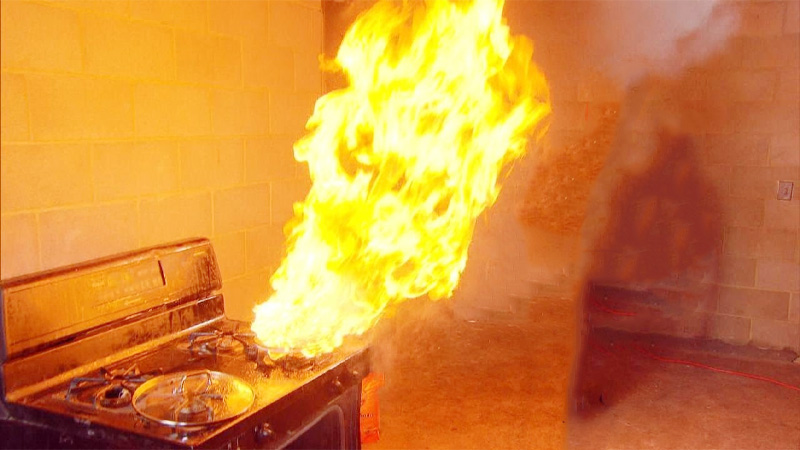
Despite the kitchen’s warmth, it can be hazardous if the range hood isn’t working properly. When appropriately used, range hoods are essential for kitchen safety. However, are they safe from fires?
In short, yes. Grease and other particles can accumulate around your stovetop, get lodged in the ductwork behind the wall, or clog your range hood if it isn’t venting the air.
A fire can start inside your walls or on top of your stovetop because of this buildup of debris and cooking activity.
How Hot Does A Range Hood Vent Get?
During cooking, range hoods help keep your kitchen cool, especially with their inclusion in kitchen exhaust systems.
In order for the range hood to work properly, its temperature must be controlled. Because of this, it is tasked with dissipating heat generated by the stove.
Most range hoods can reach temperatures between 110°F and 140°F when they are working at full capacity. There are, however, some types of range hoods that can get even hotter due to their design and size.
It’s also important to remember that installing a range hood in the wrong spot could result in excessive heat buildup. A failure to deal with it appropriately could be hazardous.
Can Vent Hood Overheat?
The range hood can overheat, too, just like other kitchen appliances. In the case of an overheating range hood, what can be done?
To identify the cause of the overheating, it’s essential to find out what caused it. Typically, this occurs because the filters are clogged with dirt and prevent proper ventilation or because the fan motor has stopped working due to wear.
Other issues can occur as a result of dirt and debris, such as a stuck range hood button. If your range hood shows any signs of malfunction, clean it regularly and check for any signs of a problem.
The range hood can overheat if it’s not used correctly or maintained well, causing condensation to accumulate. Keep your range hood from getting overheated to reduce condensation.
Final Words
Maintaining a clean and safe kitchen requires a kitchen air vent hood. Having hot air blowing through the range hood vent can be a problem.
However, there are simple solutions to your problem and keeping your kitchen clean. Heat shouldn’t escape from the ducting through the top of the hood, so ensure it is airtight and insulated.

